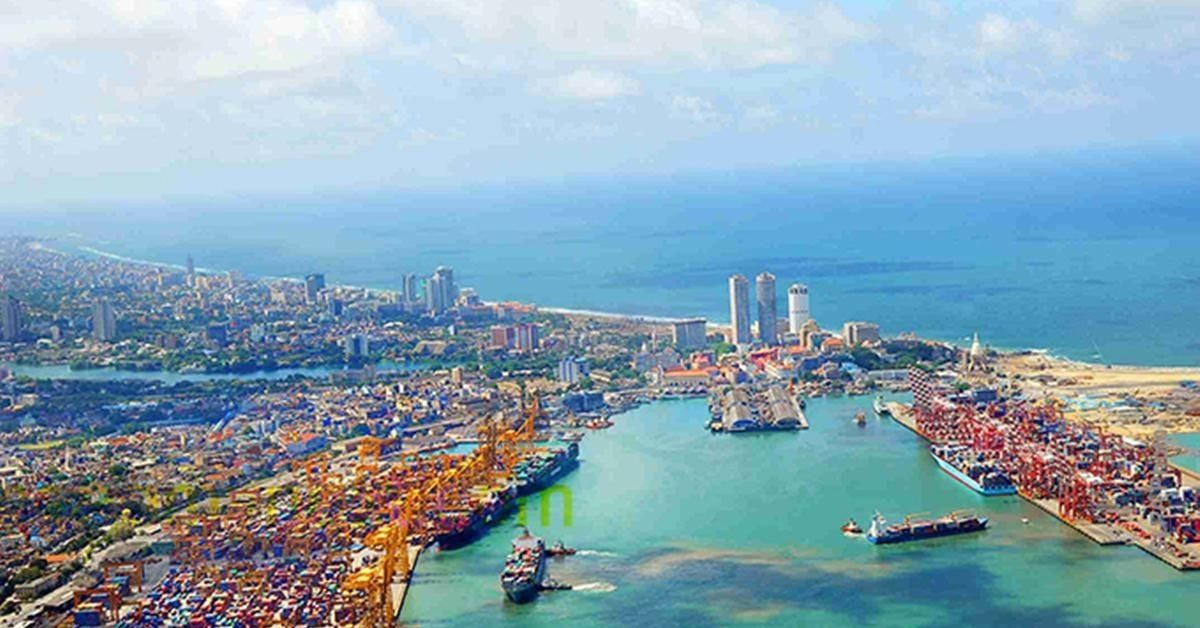The dramatic recent fire on a container ship off Sri Lanka highlighted the risks involved in the island nation’s ambitions to become one of the world’s busiest maritime transport hubs.
The MV X-Press Pearl burned for 13 days, releasing tonnes of chemicals and plastics. The sinking ship’s nearly 300 tonnes of fuel oil may now leak into the Indian Ocean.
HOW IMPORTANT IS SRI LANKA?
Thanks to its geographical location, around 200 container ships and oil tankers sail past every day on the busy routes between Asia, the Middle East and Europe.
But Sri Lanka is also the biggest so-called transhipment hub in South Asia, meaning that some of the world’s biggest ships dock in Sri Lanka to load and unload containers.
Colombo, four days by ship from Singapore and four and a half to Dubai, is the only port between those two places deep enough to handle ships with more than 18,000 containers.
WHAT ARE ITS PLANS?
Colombo Port now hopes to double its annual handling capacity of 7.2 million containers in four years.
“We are strategically located and we are strategically important,” Sri Lanka Ports Authority (SLPA) chairman Daya Ratnayake told AFP.
“But, we have a serious problem here, the problem is (lack of) capacity.”
India is developing a deep-water port at Vizhinjam on its southwest tip and is planning another in the Nicobar Islands in the Bay of Bengal, both of which may steal some of Colombo’s trade.
WHAT DO OTHER COUNTRIES THINK?
Two-thirds of the transhipment cargo going through Sri Lanka is goods going from or to India, and New Delhi has traditionally seen Colombo as an ally.
However, since a big chunk of what passes through the Indian Ocean is Chinese-made, Beijing has also shown a keen interest in developing Sri Lanka as a key link on its Belt and Road Initiative (BRI).
Since 2014, Colombo Port has been home to a US$500-million Chinese-run deep sea terminal. To pacify New Delhi, Sri Lanka this year allowed India to build another new terminal right next door.
“This is how we are balancing,” Ratnayake said. “We as a country must take all this competition to our advantage.”
WHAT ELSE IS CHINA DOING?
Sri Lanka has also built a second deep-sea port at Hambantota on its southern tip, even closer to the ships steaming between the Malacca Strait and the Suez Canal.
After Sri Lanka failed to service its debts to build the port, Hambantota has since 2017 been leased to China, alarming Western countries as well as India.
China wants Hambantota one day to resemble Shanghai, and aims to develop it as a container port able to service and refuel monster container ships 400m long.
Currently the port does a lucrative business as a transhipment centre for hundreds of thousands of cars every year made in India and South Korea on their way elsewhere.
WHAT ABOUT THE ENVIRONMENT?
Plastic pellets that escaped the MV X-Press Pearl have blanketed beaches on Sri Lanka. Fishing in the area has been suspended, hitting the local economy hard.
Hemantha Withanage from the Centre for Environmental Justice (CEJ) has petitioned the Supreme Court to force the government to get ready for more disasters as the ports get busier.
“We don’t have the equipment and the skills to deal with another catastrophe like this,” Withanage told AFP.
Source : Channel News







